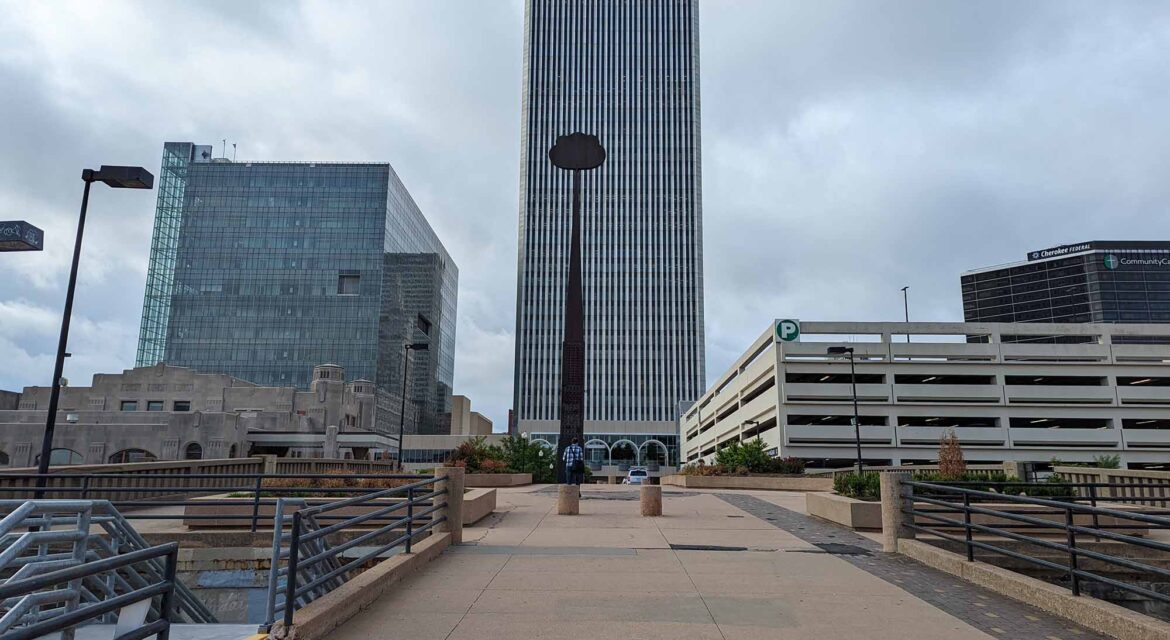 Installed for the 1991 Mayfest, a giant sculpture named “Artificial Cloud” rises 72.5 feet into the air and can be seen from various places in Tulsa, Oklahoma. Native American artist Bob Haozous created the piece as an expression of what it means to go against nature. Audiences can focus on the artificial cloud, rather than the real ones above their heads, which is something Haozous wanted people to recognize and explore.
Installed for the 1991 Mayfest, a giant sculpture named “Artificial Cloud” rises 72.5 feet into the air and can be seen from various places in Tulsa, Oklahoma. Native American artist Bob Haozous created the piece as an expression of what it means to go against nature. Audiences can focus on the artificial cloud, rather than the real ones above their heads, which is something Haozous wanted people to recognize and explore.
Described by the Tulsa Convention and Visitors Bureau as “a silent commentary on man’s love of technology and the destructiveness that can come from that infatuation. The surface of the sculpture has been allowed to rust, to show the effect of time and the atmosphere.” This exposure to the elements is a core component of the sculpture and something Haozous actively considered.

 As a sculptor, Haozous has successfully wedded Native and especially Apache imagery with powerful form and wit, much of which is aimed at contemporary American life. Artificial Cloud highlights this combination of form and wit on multiple levels.
As a sculptor, Haozous has successfully wedded Native and especially Apache imagery with powerful form and wit, much of which is aimed at contemporary American life. Artificial Cloud highlights this combination of form and wit on multiple levels.
Leaving the surface exposed to the elements in this manner was a conscious decision by Haozous. He mentioned that trying to prevent the rusting of an object like Artificial Cloud goes against nature. It gets at his central theme of the piece, which is that in the future, people will have to make their own environments. He designed it as a way of drawing attention to climate change and other harmful practices that impact the environment.
Shackles and human icons further define the piece, enabling audiences to form their own interpretations of these details and the overall sculpture. While Haozous has embraced the eventual destruction of his piece, it was also designed to endure for centuries, highlighting the impact that such landmarks can enable across generations.

